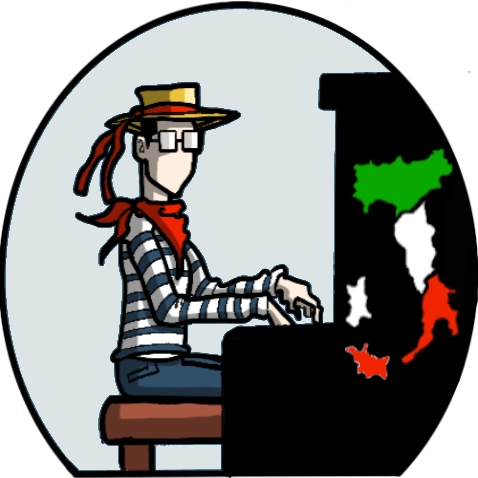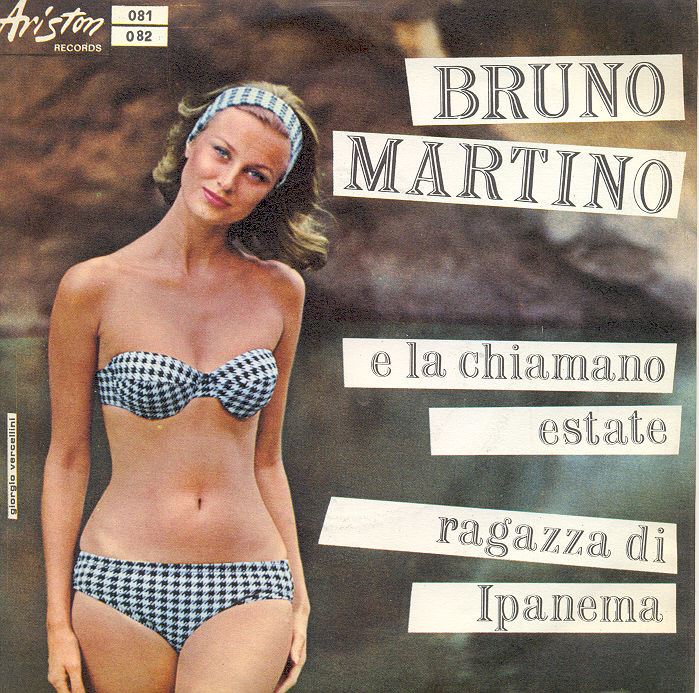[Monday No. 77] Bruno Martino was one of the greatest Italian songwriters. A musician by vocation from a very young age, he found a unique style that made him the greatest Italian nightclub musician. Let us listen to and analyse one of his great classics, E la chiamano estate.
Night clubs have been an irreplaceable practice ground for an entire generation of musicians, playing every night and for many hours they had the opportunity to experience and get along with their bandmates.
Bruno Martino’s music has all the positive qualities of ‘nightclub music’: humour, lightness, sensuality and even a certain flamboyance. These characteristics are found not only in the lyrics of the songs but also in the music, for example in certain fast jazz-like phrases that Bruno Martino uses on the piano, although he is not a virtuoso on the instrument.
In addition to many songs of a light-hearted and playful nature (e.g. Le canzoni del Terrore, Con quelle gambe, Baby luna) Bruno Martino composed some evocative love songs, the best known of all being Estate.
Estate is the only Italian song to have entered the international repertoire of jazz standards, with unforgettable interpretations by Joao Gilberto and Michel Petrucciani.
E la chiamano estate: an encounter with Brazilian music
E la chiamano estate was released in 1965 on a 45 rpm record that featured on the other side nothing less than the great Brazilian classic Garota de Ipanema reinterpreted by Bruno Martino under the title Ragazza di Ipanema. Like many Italian artists, the pianist and singer was greatly inspired by Brazilian music, in particular by that style, called bossanova, that was charming the entire world.
The exchange was not one way, however, as a curious episode proves: in July 1963 Joao Gilberto came to Italy with Joao Donato, Tiao Neto (basss) and Milton Banana (drums). While the quartet was performing on the top floor of a well-known discotheque in Versilia, Bruno Martino’s orchestra was playing Estate in the main hall; it was there that Joao Gilberto heard it for the first time.
The Brazilian singer greatly appreciated the song, of which he went on to make several recordings in Italian. This is perhaps the only song not sung in Brazilian by Joao Gilberto, who evidently loved the song.
Joao Gilberto and his bandmates stayed three months in Marina di Pietrasanta, but the Brazilian guitarist remained locked in his room the whole time, afflicted by the first symptoms of a hand problem. In October they finished the show and refused other engagements, Joao went to Paris to meet an acupuncture specialist and there he met Miucha, still a student, whom he married some time later.
Let us now return to the musical analysis of E la chiamano estate, to discover the most interesting features of the song.
E la chiamano estate is a very easy song to sing, the entire melody moving in a limited register, from middle C to B♭ on the third line, and without jumps. However, this apparent simplicity conceals considerable sophistication in the relationship between melody and harmony. Observe, for example, the opening phrase: the melody begins on F (#11 on the B7 chord) and then ascends to G (13th on the B♭7sus chord).

Something similar happens in measure 26 where the melody moves on 11th and 9th (B♭ and G on the Fm7 chord), #11th and 9th (G and, E♭ on the D♭7 chord), 9th and 7th (F and D on the E♭maj7 chord).

The very bold relationship between melody and harmony and the extensive use of sus4 chords give the song a sense of suspension and dreaminess and express the melancholy of the abandoned lover, who feels distant and misunderstood by everything around him. Writing the lyrics for E la chiamano estate was another great of Italian song: Franco Califano.
Until next Monday!
E la chiamano estate – download the lead sheet
Here is my version of E la chiamano estate together with the singer Anna D’Acunto.


